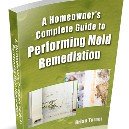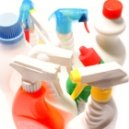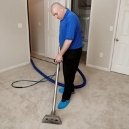Find a pre-screened local mold removal specialist Free Estimate
Find a Mold Specialist Now
Click or Call, Toll-Free 24/7
Correct Mold Removal Techniques
There are many different mold removal techniques and the best technique for mold clean up depends in large part on where the mold is growing.
Scrubbing with Antimicrobial Cleanser
Scrubbing non-porous surfaces, such as sinks, tubs, toilets, tile, metal, and glass, with an antimicrobial cleaner (available at most home improvement stores) is the simplest way to remove mold. This often works on surfaces like concrete and brick, as well, although it can be more difficult to clean those materials. It won’t work on porous surfaces, though, like carpet or drywall. You should wear gloves and a face mask when removing mold with antimicrobial cleanser. Read and follow all the directions on the label carefully.
Removing and Replacing Moldy Materials
Porous materials, including drywall, insulation ceiling tiles, carpet, and soft furnishings like couch cushions and mattresses are usually impossible to clean thoroughly. Even if you remove all the mold from the surface of these materials, microscopic mold spores can remain in the pores of the materials. Soon mold will grow over the surfaces again.
Instead of cleaning moldy materials such as these, you must remove and replace them. This must be done very carefully in order to make sure you don’t inadvertently spread mold spores to other areas of the home in the process or expose yourself to mold spores that can make you sick. You need to wear safety gear, including gloves and a face mask. You also need to use large sheets of heavy plastic to section off your work area, so mold spores can’t drift into other areas of the home during the mold removal process. Many mold remediation experts recommend setting up negative pressure in the work area, as well, which can be done using a shop vac. Moldy materials need to be sealed in heavy plastic bags before they are carried out of the home, to prevent the scattering of mold spores along the way. A vacuum with a HEPA filter should be used to clean up dust or small bits of debris caused by removing materials like drywall.
Moldy Wood
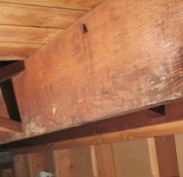
Wood is somewhat porous (some types of wood more so than others), so sometimes it’s difficult to completely remove mold from wooden surfaces. In many cases, moldy wood can be removed and replaced, but sometimes it can’t. In these cases, mold remediation experts sometimes sand the wood to remove mold. We recommend you call in a professional if you have moldy wood you think may need to be sanded, rather than sand it yourself because sanding moldy wood exposes you to potentially harmful mold spores even more than other mold removal techniques do.
A better option for a homeowner would be to first clean the wood with an antimicrobial cleaner, allow it to dry, and then to encapsulate the wood.
Removing Mold from Heating and Air Conditioning Ducts
Removing mold from heating and air conditioning ducts is complicated and requires special equipment the average homeowner doesn’t have readily available. The Environmental Protection Agency recommends calling in a professional if you have mold in your ductwork.
For More Information
For more information about techniques for removing mold, including detailed step-by-step instructions complete with pictures, we recommend the ebook A Homeowner’s Complete Guide to Performing Mold Remediation by Brian Turner. It’s the best guide we’ve seen for mold removal, written by an expert in the field.
For Assistance with Mold Clean Up
For assistance with mold clean up, or just some professional advice, we recommend consulting with a mold remediation specialist. Most mold remediation specialists offer no cost consultations during which they will visit your home, inspect the areas affected by mold, make sure all the mold has been located, advise you about the best mold removal techniques for the job, and advise you about the safety precautions that need to be taken during the mold removal process. We encourage you to take advantage of this free expert advice, even if you plan to do the clean up yourself. Follow this link to get a list of mold remediation specialists offering no cost consultations in your area.
Return From Mold Removal Techniques To Our Main Remediation Page
Ref:
EPA: Indoor Air Quality
Free Home Inspection By A Mold Removal Specialist
Search This Website
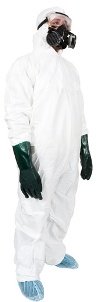
Worker wearing personal protection during a mold removal project.
Recent Articles
-
See Our 5 Recommended Mold Removal Companies in Covington, KY
Apr 16, 25 12:59 PM
-
See Our 5 Recommended Mold Removal Companies in Wheaton, IL
Jun 20, 24 10:33 AM
-
See Our 5 Recommended Mold Removal Companies in Aberdeen, SD
Oct 08, 21 04:05 PM

